
Jehoshaphat, according to 1 Kings 22:41, was the son of Asa, and the fourth king of the Kingdom of Judah, in succession to his father. His children included Jehoram, who succeeded him as king. His mother was Azubah. Historically, his name has sometimes been connected with the Valley of Josaphat.
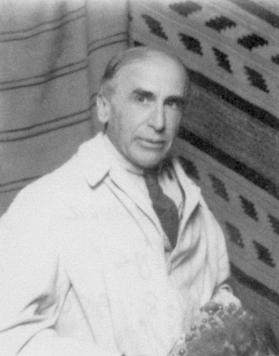
Bert Geer Phillips was an American artist and a founding member of the Taos Society of Artists. He settled in what was then Taos, New Mexico Territory (1898) and was a founder of the Taos art colony. He is known for his paintings of Native Americans, New Mexico, and the American Southwest. He was also a benefactor of the Western artist Harold Dow Bugbee, who became curator of the Panhandle-Plains Historical Museum in Canyon, Texas in 1951.

"The Legend of Sleepy Hollow" is an 1820 short story by American author Washington Irving, contained in his collection of 34 essays and short stories titled The Sketch Book of Geoffrey Crayon, Gent. Irving wrote the story while living in Birmingham, England.

The vaquero is a horse-mounted livestock herder of a tradition that has its roots in the Iberian Peninsula and extensively developed in Mexico from a methodology brought to the Americas from Spain. The vaquero became the foundation for the North American cowboy, in Northern Mexico, Southwestern United States, and Western Canada.
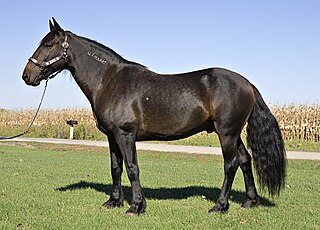
The mustang is a free-roaming horse of the Western United States, descended from horses brought to the Americas by the Spanish. Mustangs are often referred to as wild horses, but because they are descended from once-domesticated animals, they are actually feral horses. The original mustangs were Colonial Spanish horses, but many other breeds and types of horses contributed to the modern mustang, now resulting in varying phenotypes. Some free-roaming horses are relatively unchanged from the original Spanish stock, most strongly represented in the most isolated populations.

The Dullahan, also called Gan Ceann, is a type of legendary creature in Irish folklore. He is depicted as a headless rider, on a black horse, who carries his own head held high in his hand or under his arm.
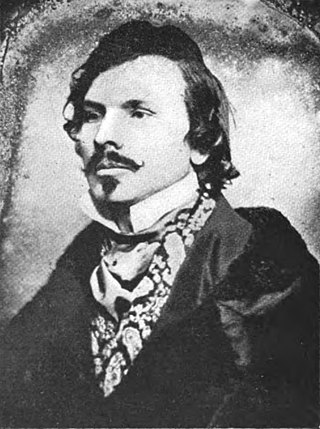
Thomas Mayne Reid was an Irish-American novelist who fought in the Mexican–American War (1846–1848). His many works on American life describe colonial policy in the American colonies, the horrors of slave labour and the lives of American Indians. "Captain" Reid wrote adventure novels akin to those by Frederick Marryat and Robert Louis Stevenson, and set mainly in the American West, Mexico, South Africa, the Himalayas, and Jamaica. He was an admirer of Lord Byron.

Gerald Tommaso DeLouise, known professionally as Burt Young, is an American actor, author, and painter. He played Rocky Balboa's brother-in-law and best friend Paulie Pennino in the Rocky film series, his performance in the first installment of which earned him a nomination for the Academy Award for Best Supporting Actor.

Dead Man's Walk is a 1995 Western novel by American writer Larry McMurtry. It is the third book published in the Lonesome Dove series but the first installment in terms of chronology. McMurtry wrote a fourth segment to the Lonesome Dove chronicle, Comanche Moon, which describes the events of the central characters' lives between Dead Man's Walk and Lonesome Dove. The second novel in the Lonesome Dove series was the 1993 sequel to the original, called Streets of Laredo. Dead Man’s Walk was later adapted into a three-part miniseries of the same name, which aired in May 1996.

When You're in Love is a 1937 American musical film directed by Robert Riskin and Harry Lachman, who was not credited, and starring Grace Moore and Cary Grant. Moore sings "Minnie the Moocher" and the Ernesto Lecuona classic Cuban song "Siboney". Two of the other songs in the film – "Our Song" and "The Whistling Boy" – are by Jerome Kern and Dorothy Fields.
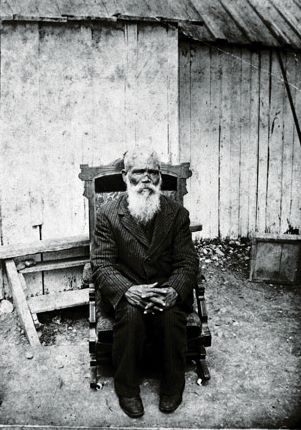
Don Pedro Jaramillo was a curandero and folk saint from the South Texas Valley region. He was known as "the healer of Los Olmos Creek" and "el mero jefe" of the curanderos.
The death coach is part of the folklore of Northwestern Europe. It is particularly strong in Ireland where it is known as the cóiste bodhar, also meaning "silent coach", but can also be found in stories from British and American culture. It is usually depicted as a black coach being driven or led by a dullahan.
Ernest Joseph "Ern" Pedler was a writer whose work was based on his experiences as a distance-riding horseman and wild horse-chasing cowboy. He published one book, The Big Lonely Horse (1958), and two serialized novellas, Trail to Freedom (1959) and Dust of the Home Corral (1961). His many short stories and articles are listed below.

A Cibolero was a Spanish colonial buffalo hunter from New Mexico. The Spanish word for buffalo as used in New Mexico is cibolo; hence, the name Cibolero for buffalo hunter.

The Yellow Chief: A Romance of the Rocky Mountains is a novel by Thomas Mayne Reid written in 1869, converging frontier fiction with anti-slavery messages. The Yellow Chief tells the story of a southern mulatto slave who runs away to become a Cheyenne Indian chief in the Rocky Mountains, seeking revenge on his cruel plantation owners as they emigrate to the West.
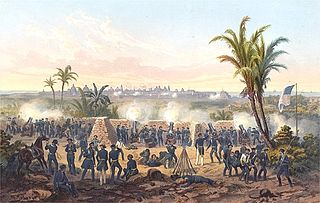
The Rifle Rangers or Adventures in South Mexico (1850) is a novel by Captain Mayne Reid, set in Vera Cruz, Mexico, during the Mexican War (1846–1848)
Calhoun is a surname of Irish origin. It is a variant of the Scottish surname Colquhoun. Notable people with this surname include:
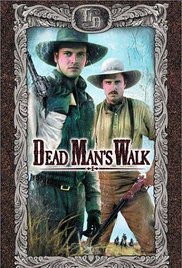
Dead Man's Walk is an American epic Western adventure television miniseries starring David Arquette as Augustus McCrae and Jonny Lee Miller as Woodrow F. Call. It was directed by Yves Simoneau. It is a two-part adaptation of the 1995 novel of the same name by Larry McMurtry and is chronologically the third book of the Lonesome Dove series, but regarded as the first events in the Lonesome Dove franchise. In this prequel to Lonesome Dove, it is 1840s Texas, and two young men join the Texas Rangers unit that's on a mission to annex Santa Fe. While the miniseries has been broken up into 3 parts for the DVD release, the series was originally broadcast by ABC over two nights in May 1996, and was later nominated for several awards.
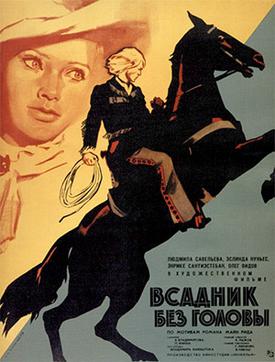
The Headless Horseman is a 1973 Soviet-Cuban Red Western film directed by Vladimir Vajnshtok based on the eponymous novel by Thomas Mayne Reid. The film was the first Soviet Western. It was a box office success, 51,7 million tickets were sold and the picture holds the 33rd place in terms of cinema attendance in the Soviet Union.
















